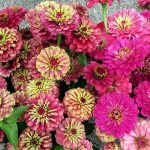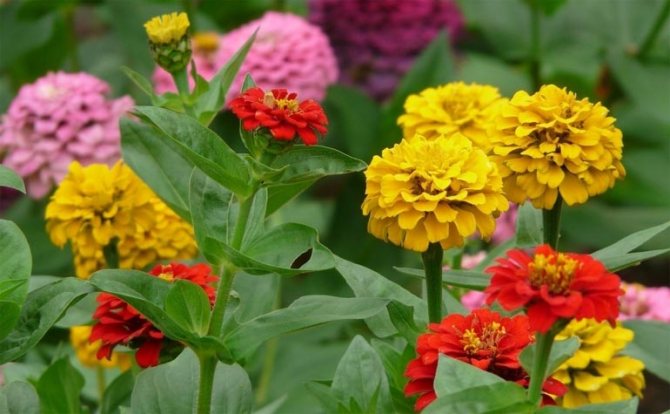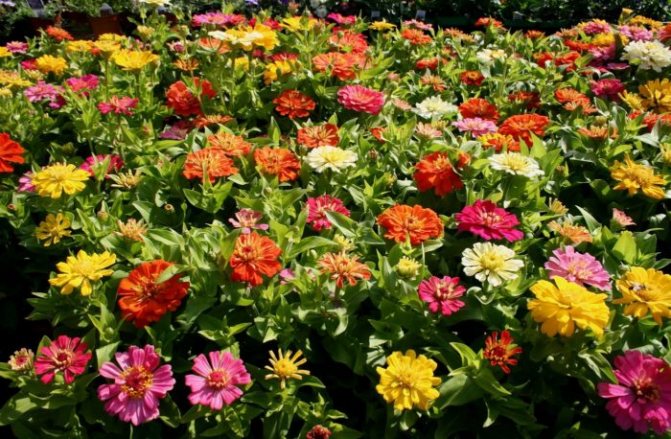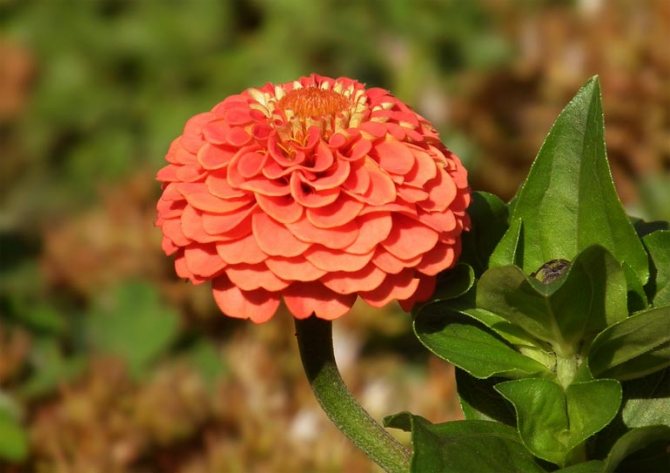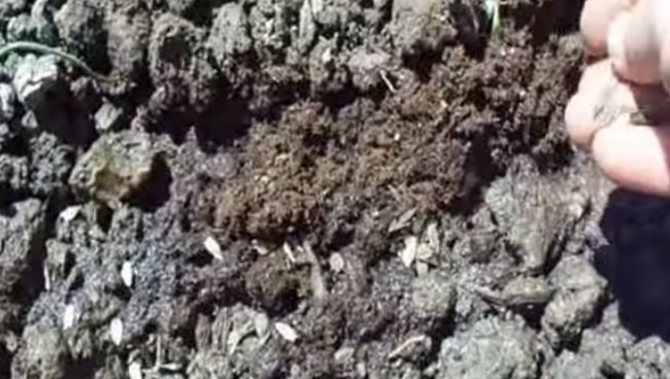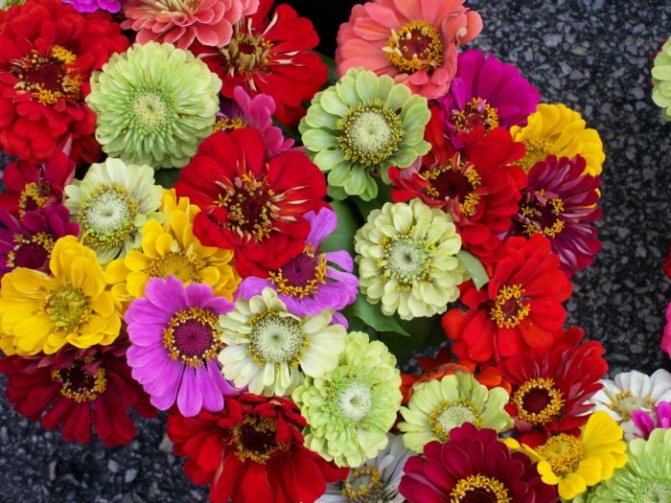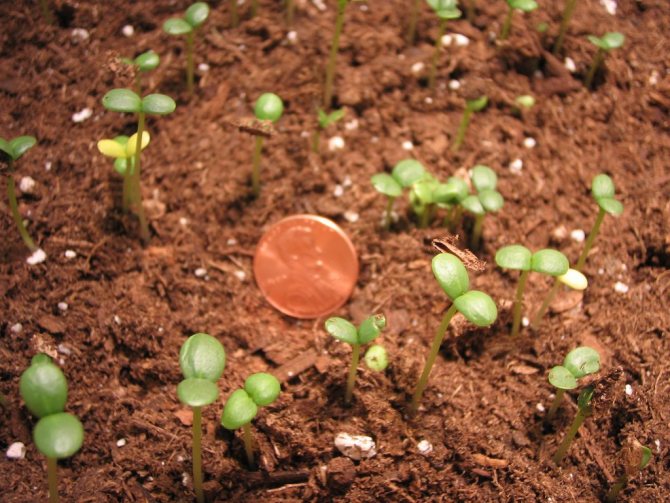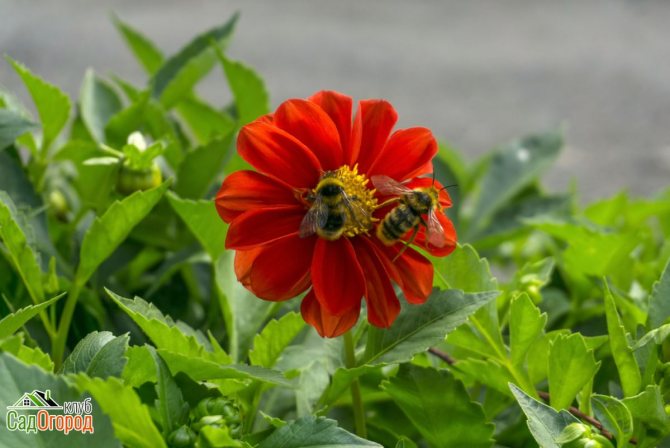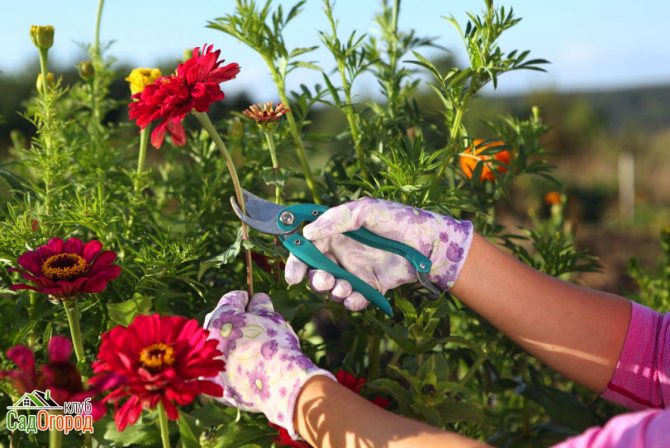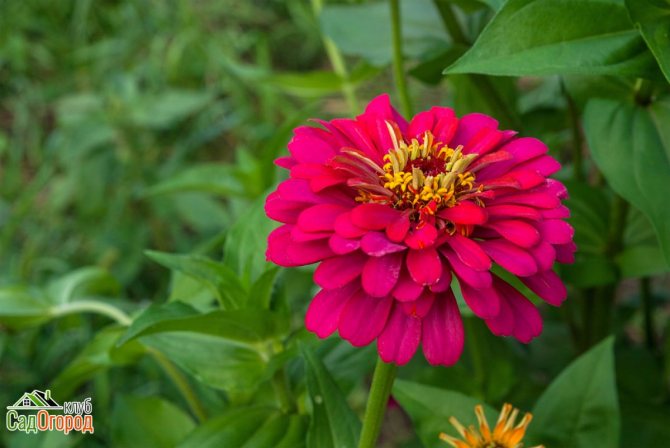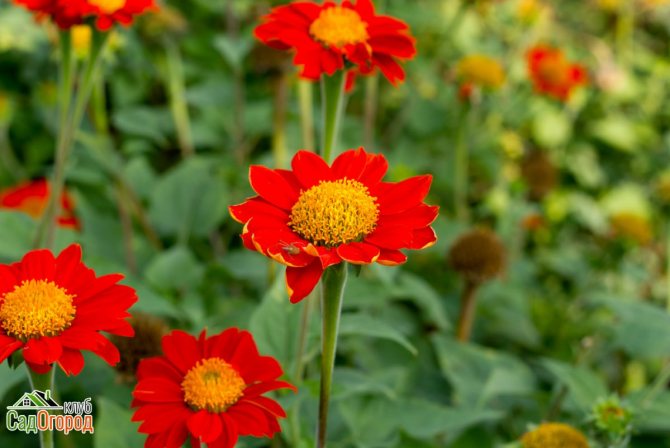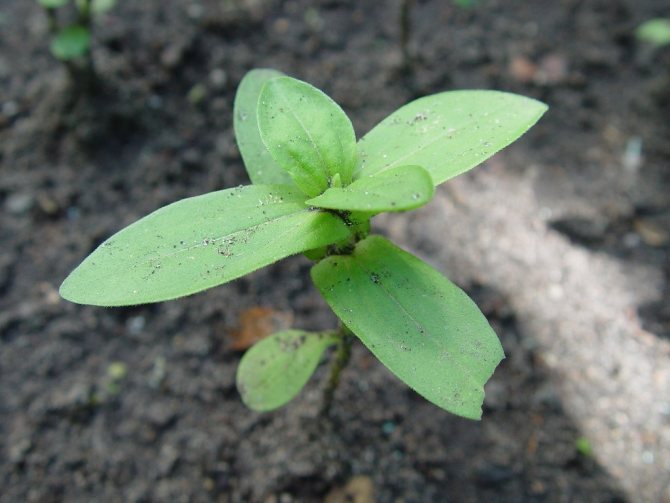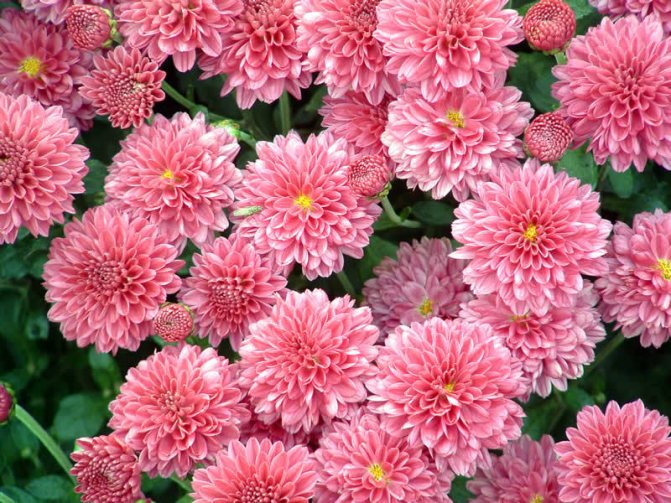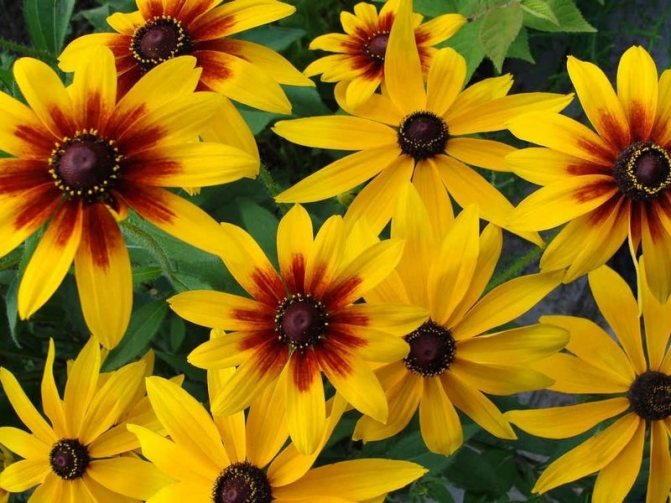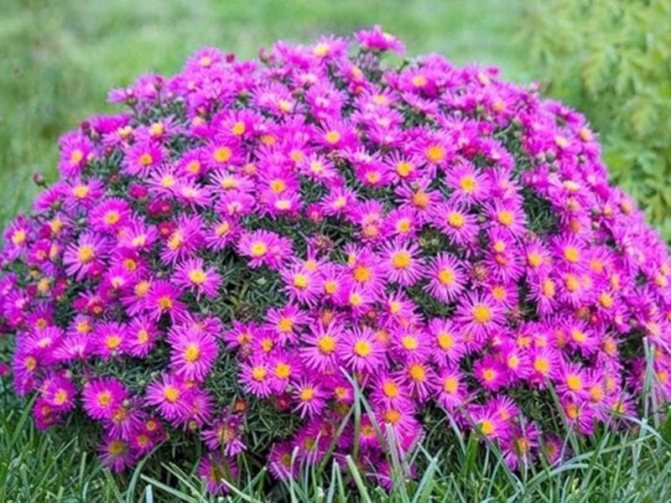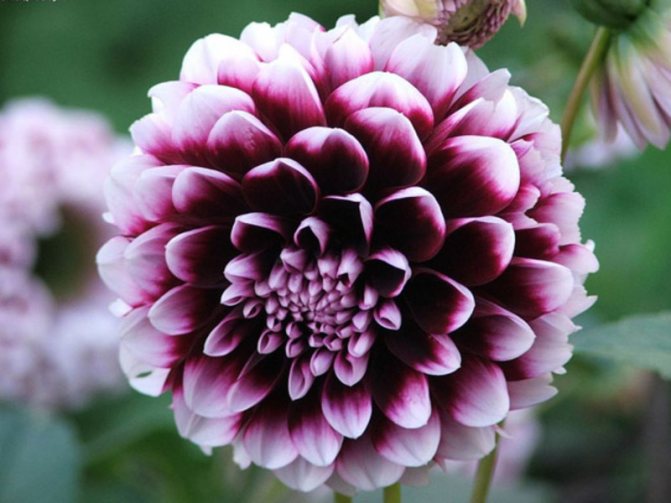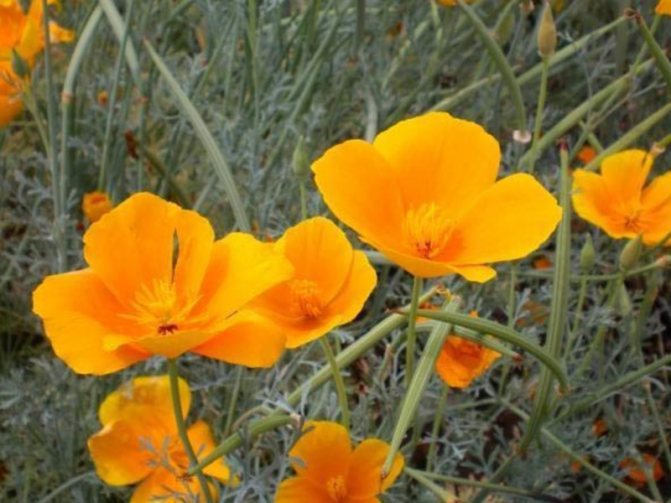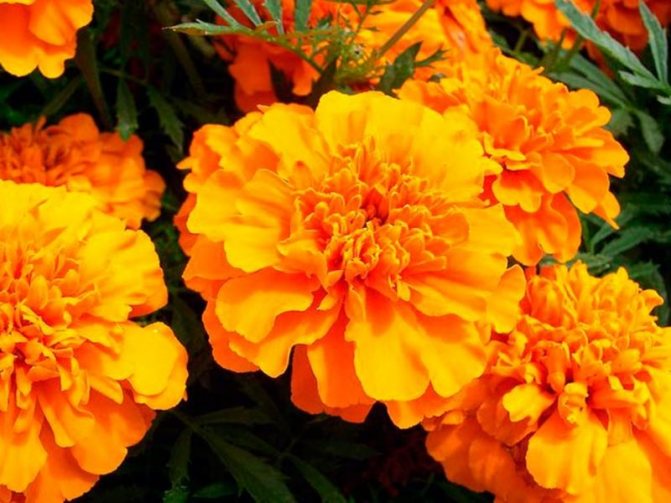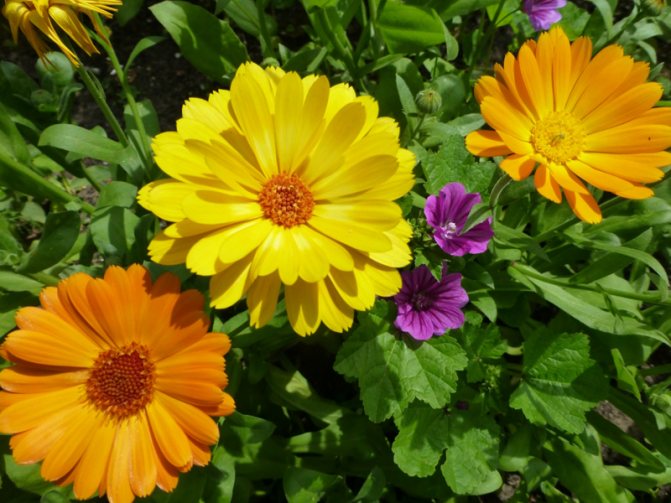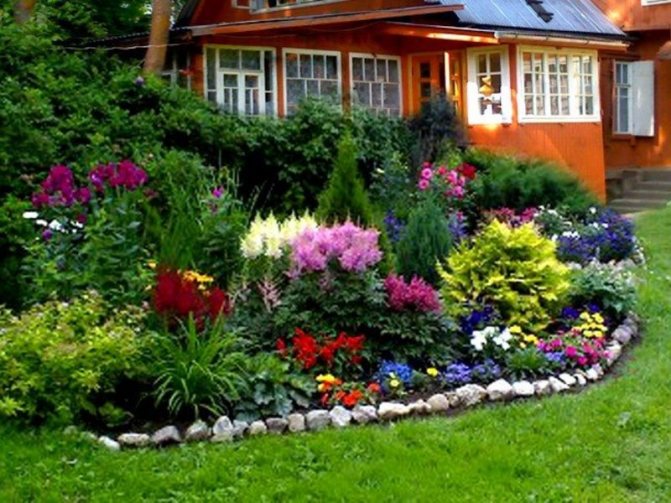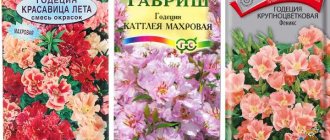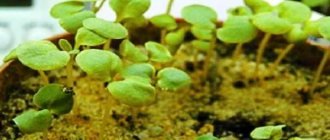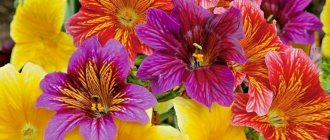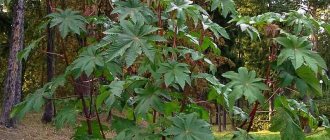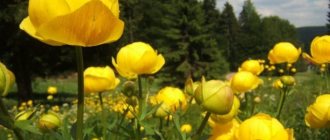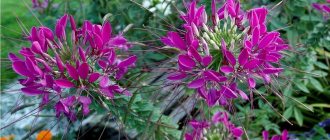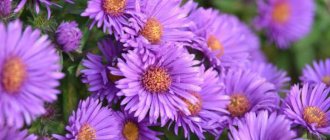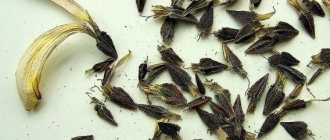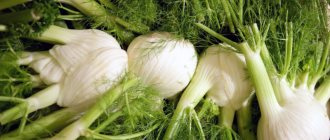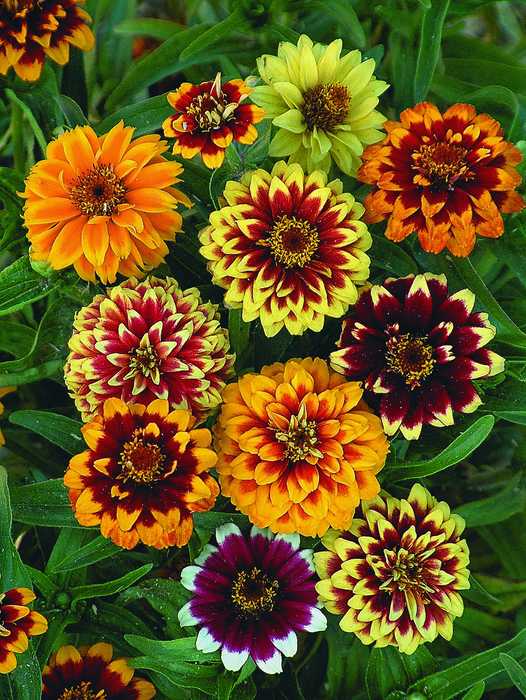
Surely each of you paid attention to the bright beautiful flowers of zinnia. And even if you do not know the name of this plant, you have more than once met it in city flower beds or in the suburban area of your friends.
Zinnias are annual flowers belonging to the Aster family. They bloom in white, red, lilac, yellow and orange, making it an excellent option for landscaping flower beds and areas. They are drought tolerant and require little maintenance. But they delight the eye with their beauty not only in summer, but also in late autumn. Many growers underestimate zinnia, believing that it is discreet and completely invisible. Perhaps this is so, if we talk about only 1 single flower. But densely planted and blooming, they are simply gorgeous.
In order for flower beds with plantations to please you for more than one year, it is necessary to collect zinnia seeds in advance, and then plant them. In fact, the rules here are the same as in the case of many other landings, but some nuances can be distinguished.
Types and varieties of zinnia for open ground
About 20 plant species are known. Of these, only 4 species are cultivated, as well as many varieties and hybrids derived from them.
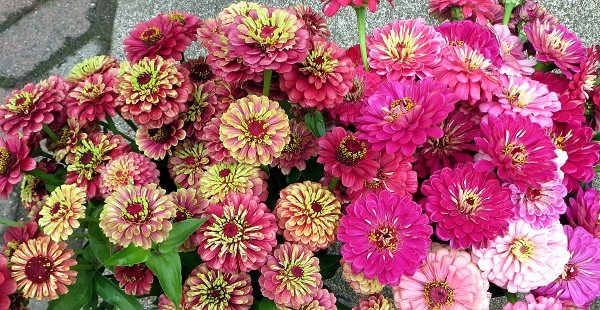

Graceful (elegans)
Annual up to 1 m or more in height with a straight stem, as a rule, not branched. Covered with dense hairs. Leaves are ovoid, with pointed tops, 5-7 cm long, also pubescent. At the tops bloom inflorescences-baskets with a diameter of 5-16 cm. The shade and surface of the petals can be different, depending on the variety. The flowering of graceful zinnia begins in June and continues until frost.
Varieties are classified according to several characteristics. According to the structure of inflorescences, they are simple, double, semi-double.
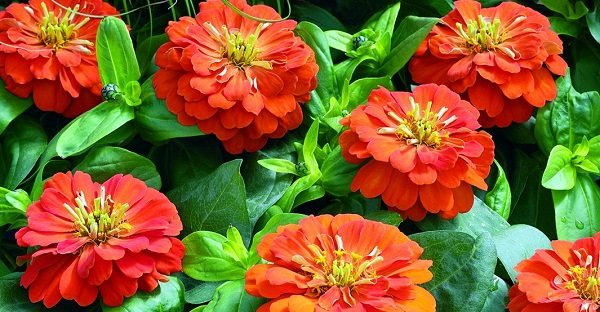

Dahlia
Dahlia is a powerful spreading or compact shrub 60-90 cm high. Leaves up to 12 cm long, double inflorescences, spherical.
Varieties:
- Violet;
- Orange Koenig;
- Polar bear.
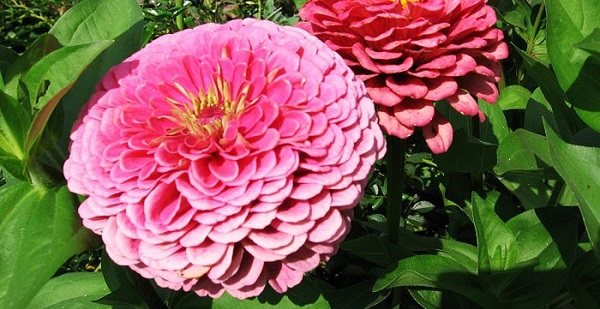

Pomponnaya
Lilliput or pomponnaya - shrubs no more than 50 cm high with a large number of stems. The leaves are small. The inflorescences resemble a pompom.
Varieties:
- Little Red Riding Hood;
- Tom Tumb;
- Tambelin.
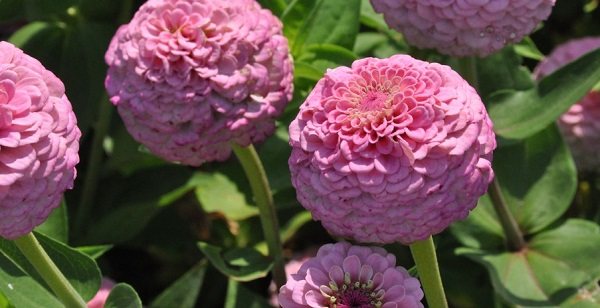

Fantasy
Fantasy - compact spherical plants up to 65 cm high. The leaves are large, the inflorescences are loose, curly. The ligulate flowers are wrapped in tubes and can bifurcate at the ends.
Varieties:
- Present;
- Fantasy.
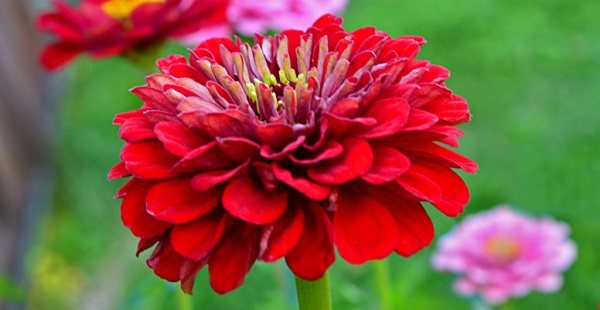

Narrow-leaved (angustifolia) or Haage (haageana)
Erect annual with branched stems. The leaves are lanceolate, with pointed ends. Flowers are small, simple or double.
Varieties:
- Glorienshine;
- Sombrero;
- Persian Carpet Mixed series;
- mixtures of Starbright and Classic.
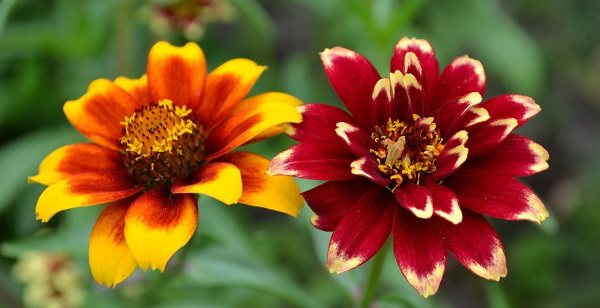

Fine-flowered (tenuiflora)
Plant up to 60 cm high. Shoots are thin, reddish. Ligulate flowers of a purple tone, narrowish, with twisted ends. The most famous variety is Red Spider.
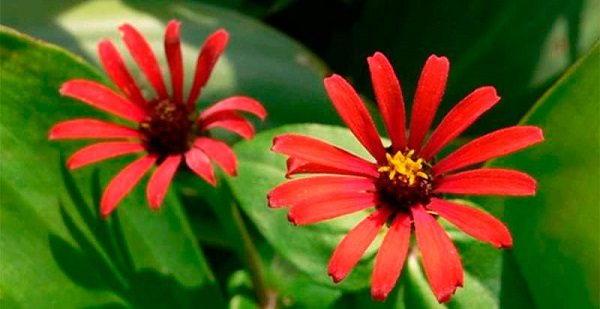

Linearis (linearis)
The most compact domesticated species. The leaves are thin, narrow, like a narrow-leaved zinnia. Globular bushes up to 35 cm high. Ligulate flowers are yellow with orange edges. Suitable for growing in pots, in small flower beds.
Varieties:
- Golden ai;
- Caramel;
- Yellow Star.
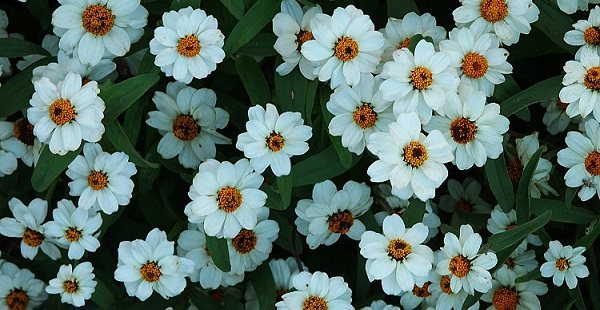

Hybrid
Many hybrids appeared from the crossing of graceful and narrow-leaved zinnia:
- Profusion series;
- Magellan series;
- Swizzle;
- Scarlett Yellow.
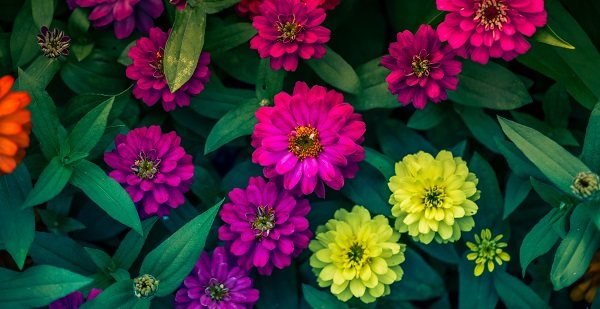

Description of the species
Zinnia (Latin name for Tsinius) is a shrub plant from the Asteraceae family. This flower comes from southern Mexico, and since the end of the last century, zinnias have already been common on all continents of the globe.
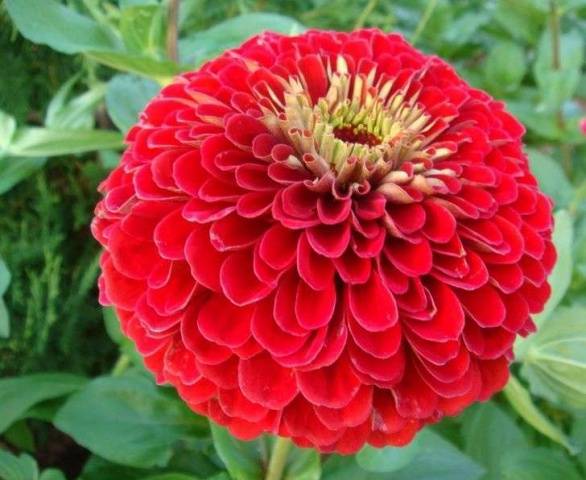

The characteristics of zinnia flowers are as follows:
- one-year growing cycle, although in warm countries this flower is cultivated as a perennial;
- different heights of flowers - from 20 to 100 cm, which makes it possible to divide all zinnias into dwarf, undersized, medium and tall species;
- the leaves of the flower are whole, ovate, pointed, covered with stiff short hairs;
- the stem is powerful, herbaceous, also covered with fluff;
- inflorescences - apical single baskets;
- the diameter of the flowers can be different - from 3 to 15 cm;
- peduncles are long;
- petals can be single-row or tiled, creating complex lush inflorescences;
- zinnias are painted in absolutely any shades, except for the blue palette;
- the flower is resistant to drought and high temperatures;
- zinnia does not tolerate cold, the flower and its seeds die at -1 degrees;
- Major's fruit is a tufted achene, filled with seeds;
- the plant is very unpretentious, its seedlings are easy to grow at home.
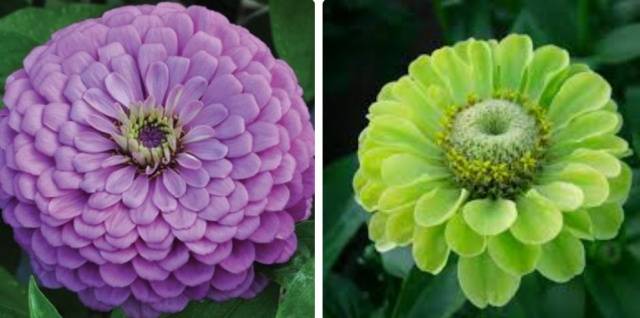

Growing seedlings from seeds
Majors can only be grown by seed. In colder climates, they are grown through seedlings. According to experienced flower growers, hardened seedlings, after planting on the site, take root faster and begin to grow. The seedling period for a plant lasts 1-1.5 months. Zinnia does not tolerate even minimal frost. Therefore, the optimal period for sowing seeds for seedlings is the end of March - mid-April. So that at the time of disembarkation on the street, the threat of frost has already passed.
Seed preparation and sowing
Seed material for better germination must first be prepared. Wrap it in gauze soaked in growth stimulant (Fitosporin, Kornevin). After 2-5 days, the seeds will hatch and it will be possible to separate non-germinating seeds from them. For sowing, prepare peat pots, fill them with a loose, fertile substrate. Deepen the seeds into them by 1 cm, 2-3 pieces each. Do not sow zinnia in containers. She takes a dive hard. After sowing, moisten the soil and place the pots in a warm room with a temperature of + 22..24 degrees.
Seedling care
In young seedlings, adventitious roots grow quickly. When the stems are extended, you need to pour the substrate into the pots. Seedlings need to provide bright, diffused light for normal growth. In the shade, it will stretch out strongly.
Before planting in the open field, the seedlings must be hardened. In order for the plant to feel natural aeration, you should first open the window more often, then take out the crops to the balcony, to the street. Increase the time they spend there each time. Adaptation should take at least a week.
Transplanting
The best time for planting seedlings in the ground is late May or early June. By this time, night frosts should completely recede. The site needs to be prepared in the fall. Dig it to a depth of 40 cm, remove all weeds. Add rotted manure, compost. Level the area before planting. Make the holes so deep that the seedlings fit in them along with the peat pot. The distance between plants should be 25-30 cm, taking into account the branching of the bushes. Place the seedlings in the holes along with the pots. Sprinkle with soil, tamp and water.
How to plant zinnia on seedlings?
From late May, in warm climates, it is possible to plant large majors seeds directly into the ground, but for early flowers, it is better to use the proven seedling method.At home, zinnia is easily bred without problems and easily, growing from seeds, when to plant, how to care for seedlings are simple questions that even beginner growers can solve. Majors sprout quickly in optimal conditions and take root in the open field without any problems.
How to sow zinnia for seedlings:
- The depth of the container for growing zinnia is from 10 cm.
- An excellent soil for majors is obtained by mixing black soil and sand in a 2: 1 ratio.
- We plant seeds germinated in a damp tissue at a distance of at least 2-3 cm.
- Seeding depth - no more than 1 cm.
- It is advisable to cover the box with foil.
- The emergence of seedlings can be expected after 3 days, but the timing depends on the freshness of the seeds.
- The optimum temperature for growing zinnia from seeds is + 23 ° C.
- A pick is made when the seedlings reach a height of 10 cm.
Can zinnia be planted in peat tablets?
For zinnia, cultivation methods are suitable, both standard - in large common boxes, and modern - in individual peat cups or tablets. The latter option allows you to plant adult seedlings in the ground without injuring the delicate roots. The survival rate of majors in this case increases significantly, so if you have a limited amount of planting material, then the use of peat tablets is an excellent solution to the problem.
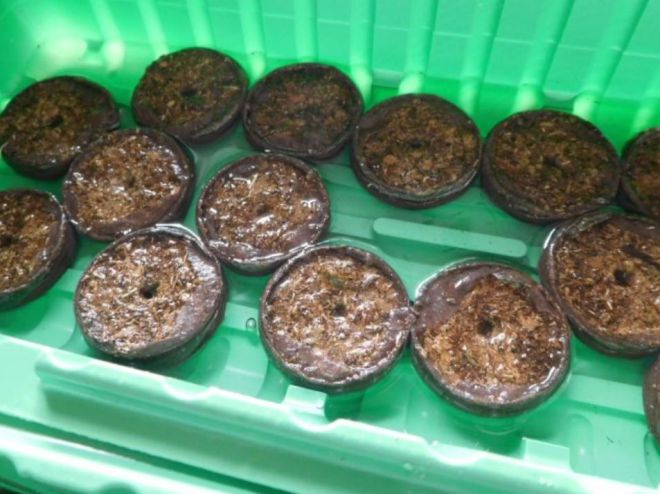

Zinnia - growing in a snail
Another modern way to get seedlings is to plant zinnia in a snail. This simple method of growing annuals is gaining popularity. For its implementation, bulky containers are not needed, compact rolls of soft material allow you to significantly save space on the windowsill. Even a schoolboy is capable of making a snail for seedlings at home.
Growing zinnia in a snail:
- We cut strips from the lining under the laminate or film about the width of a roll of toilet paper.
- We roll out the strip on the table.
- Put toilet paper on top.
- Spray the paper with the Epin solution (3 drops per 0.5 l of water).
- We spread the seeds evenly, retreating 1 cm from the edge of the paper.
- Cover the seeds with a moistened nutrient substrate with a thin layer on top.
- We roll up the roll and fix it with an elastic band.
- Before the emergence of shoots, we place the snail in a bag, which we put in a warm place.
- Next, place the roll with seedlings on a light windowsill.
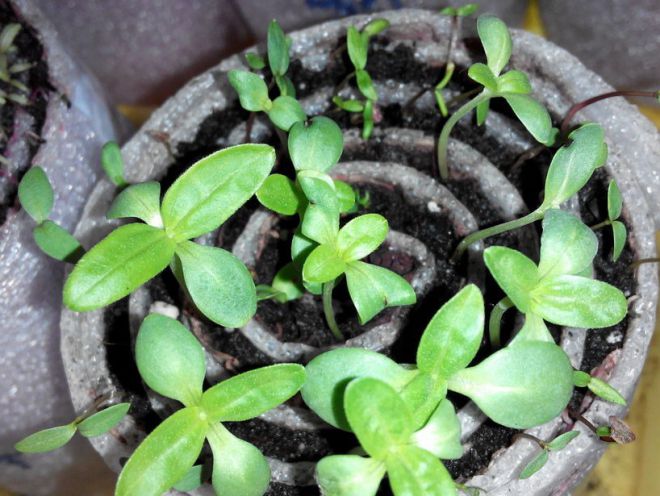

Zinnia seedlings stretched out, what should I do?
Carefully study the rules of caring for zinnia, growing from seeds, when to plant and dive plants. This culture is growing rapidly, which often leads to problems for people who do not follow the basic rules for caring for young plants. A common mistake of novice florists is that the zinnia seedlings are strongly elongated, become brittle, thin and fall on the ground.
The main reasons for pulling out seedlings of majors:
- Early sowing dates are not allowed to plant zinnia in a flower bed due to late frosts.
- Growing seedlings at high temperatures.
- Thickened crops.
- Poor lighting of seedlings - the optimal daylight hours for zinnia are at least 12 hours.
Majors can be saved if you apply special techniques for planting overgrown flowers in the soil. The sprouts should be planted in the ground with a deepening of the stem, sprinkling the excess sprout length in the hole, then adventitious roots will form on it over time. Elongated plants are recommended to be tied to pegs so that they do not break from a gust of wind. If you notice a pull of zinnia in a bin or snail, immediately add earth to the container. Try to lower the temperature at night and expose the containers to the sun during the day.
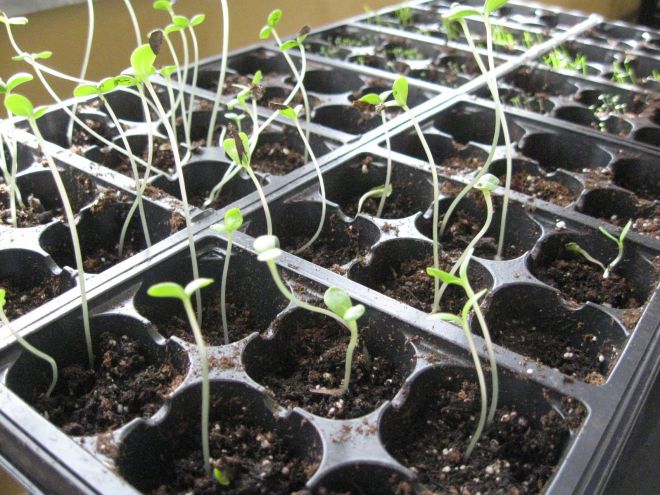

Zinnia dive
The time when zinnia dives after germination depends on the room temperature and light level. It is undesirable to allow the sprouts to stretch above the ground above 10 cm. When picking, the majors are buried to the level of the cotyledons, which gives a positive effect. Adventurous roots will soon grow on the green stalk, which will strengthen the young plant.When planting zinnia, it is recommended to pinch a long central root up to 2 cm, this technique, when grown from seeds, stimulates the branching of the root system.
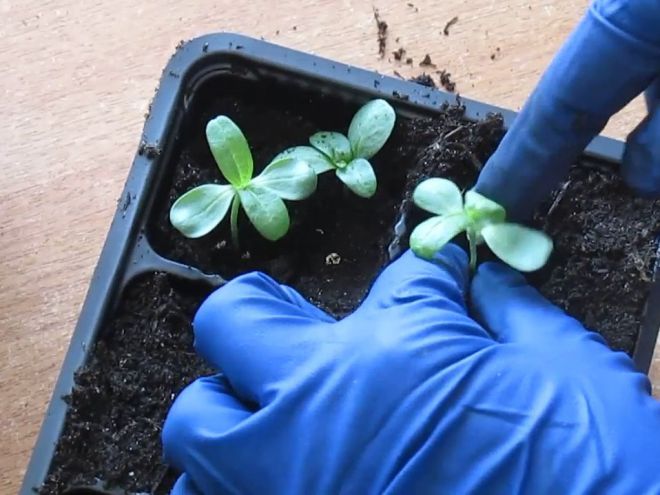

Seed planting in open ground
Zinnia can be sown directly on the site in regions with a mild climate. At the time of sowing, there should no longer be a threat of frost. The advantage of sowing in open ground over growing seedlings is that the seedlings are immediately hardened outside, initially getting used to the air temperature.
Landing dates
Under natural conditions, seeds germinate within 7-10 days. And if you create greenhouse conditions for crops, then even earlier. It is preferable to sow seeds from the second decade of May. At this time, as a rule, the cold weather already completely recedes. Although flowering when sown directly on the site occurs 2-3 weeks later than after planting seedlings.
Location selection and lighting
Zinnia belongs to the thermophilic and light-loving cultures. Therefore, the site should be well lit, not shaded by large trees and bushes. Exclude landing in areas where there are drafts. Fragile stems can be damaged by wind currents.
On a note! The soil should be loose, well-drained. The flower does not like stagnant moisture. To make the soil more moisture-permeable, you can add sand to it. With the help of rotted humus, compost, you can increase its nutritional value.
Landing rules
Dig up the sowing site first, get rid of weeds. Make holes 5 cm deep. Plant several seeds in them. After the appearance of seedlings, you need to thin them out, leave the strongest ones. The distance between plantings should be about 25-30 cm. At first, it is recommended to cover the seedlings with agrofibre to provide them with warmth and speed up the seedlings.
Determination of landing dates
To answer the question of when to plant zinnias on seedlings, you need to know some of the features of this flower. For example, the growing season in zinnias from sowing seeds to flowering is about two and a half months. The "seedling" phase of life of these flowers lasts from four to six weeks.
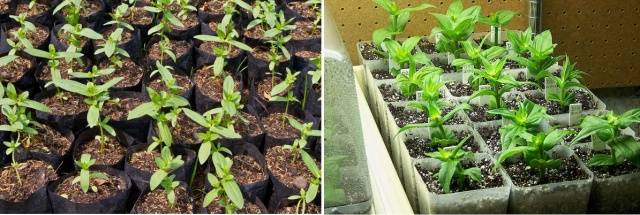

The timing of sowing zinnias will still largely depend on the climate in a particular region of the country, because, as already mentioned, these plants do not tolerate cold at all. Even a short-term zero temperature will be detrimental to the seedlings of majors, therefore, planting flowers should be done only when the soil warms up well and the threat of spring frosts has passed.
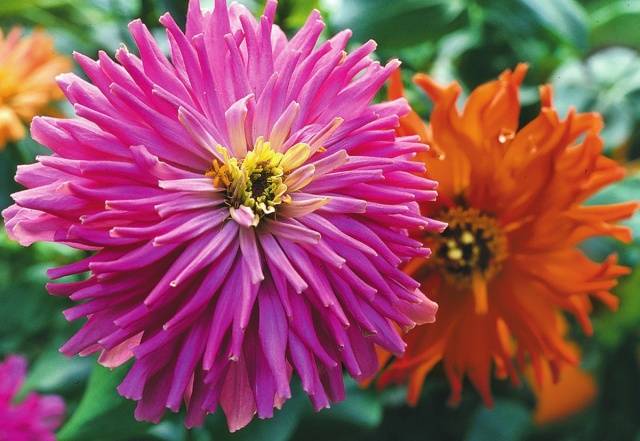

Simple calculations will help determine that the optimal time for sowing zinnia seeds for seedlings will be mid-April. Such seedlings will have time to grow up, harden and get stronger before disembarking to a permanent place. In this case, the flowering of zinnias should begin at the end of June or in the first days of July.
Outdoor care
It is very easy to care for zinnia in a flower bed. She is unpretentious and does not require much attention to herself.
Watering
Water the plant regularly, but do not overfill the soil. Otherwise, the roots will begin to rot. But if it rains often, then there is no need for additional watering.
Top dressing and fertilization
In order for a plant to bloom for a long time and magnificently, it must have nutritious soil. In order for zinnia to have the strength for budding, it needs to be fertilized. The first time the soil is fertilized at the stage of preparing the site for planting. Humus or compost, mineral compounds (superphosphate, nitrophoska) are introduced into it. During the flowering period, liquid complex fertilizers are applied 2 times a month.
Pinching
Sometimes majors are pinched to make them more bushy. The procedure is recommended to be carried out at the seedling stage or after the plants have taken root in the open field. The pinching is done at the level of 3-4 leaves. But tall species of zinnia do not have to be pruned. They are usually grown for cut, where tall stalks are valued.
How to sow seeds before winter
Winter sowing of seeds can be carried out in a small school - a special bed, where all the comfortable conditions for the development of plants are created. Sowing in containers is also widespread, to prevent the plant from being washed away by melt water.
Sowing seeds in a school
The bed should be located in a southern elevated area. The optimal height of the school is 20 cm. With such a size of the bed, the possibility of washing out the plants with melt water is excluded, and the soil warms up faster. The soil begins to be prepared long before sowing from mid-September. The soil is deeply loosened, complex fertilizers enriched with minerals, potassium, phosphorus are applied. Coarse river sand with humus is added to clay soils, then the earth is leveled, compacted and grooves are made. The holes should vary in depth according to the size of the seeds. Small seeds are sown to a depth of 1 cm, medium - 2 cm, large - 4 cm. The school is covered with a film, since snow may fall before the seeds are sown. Seeds must be dried before sowing.
In late October - early November, you can start sowing. To do this, remove the film and place the seeds in several pieces in the holes. Large seeds are placed in smaller quantities in each hole, small in larger ones. You need to prepare the potting mix in advance. To do this, you need to mix humus, peat and sand. The wells are covered with prepared substrate. They collect fallen leaves, dried grass and cover the ground for insulation. No need to water.
Protection from pests and diseases
With high dampness and excessive watering, especially if the summer is very rainy, the plant can undergo fungal infections, such as powdery mildew, gray rot. Industrial fungicides are used to combat diseases.
Effective drugs:
- Vectra;
- Topaz;
- Fundazol.
Zinnia pests:
- aphid;
- slugs;
- snails.
It is recommended to collect snails and slugs by hand. If poultry does not run near the plantings, you can use chemical agents - Thunderstorm, Meta. For the prevention of slugs and snails, it is recommended to sprinkle lime, eggshells around the bushes with zinnias. To get rid of aphids, use insecticides (Aktara, Aktellik, Fitoverm). If the plant is severely damaged by diseases and pests, it is better to dig it up and destroy it so that other crops do not become infected.
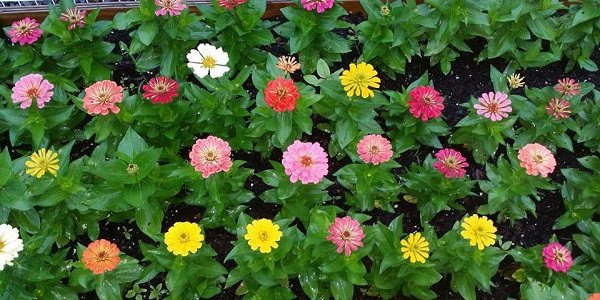

How to care for majors
Photos of zinnia flowers are beautiful: these large inflorescences of all kinds of shapes and colors will be a real decoration for any garden. What will especially delight the florist who opted for the majors is that they do not need complicated care at all.
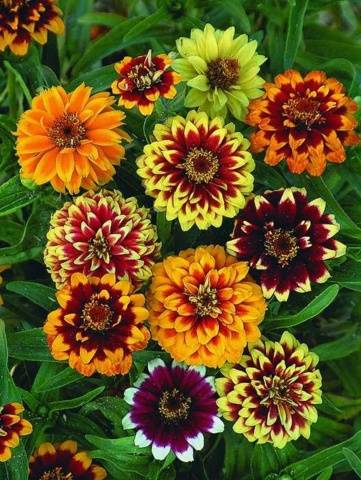

The whole care of zinnia consists of such simple actions:
- you need to fertilize the flowers only twice a season (one month after planting the seedlings and immediately before flowering). Both a mineral complex and a liquid mullein solution are suitable as fertilizers. You need to apply fertilizers in liquid form, watering the flowers at the root.
- If the grower needs low, but dense bushes of zinnia, then the flowers can be pinched. This is done even in the seedling stage, when several pairs of true leaves appear on the plants. Pinching is done over 4-5 sheets. It is possible to form a bush of majors in a flower bed, but they do it before the budding period.
- During periods of severe drought, zinnia needs to be watered, water is applied strictly at the root, trying not to wet the leaves and flowers. Of the pests for majors, the most dangerous are aphids, May beetles, slugs and snails. The latter two need to be dealt with “manually”: collect gastropod pests, spread slate near flowers, or mulch the soil with large sawdust. With insects, everything is easier - the flowers are sprayed with chemical insecticides a couple of times.
- Zinnia can also get sick, usually it is fungal infections or all kinds of rot. It is extremely difficult to deal with such diseases; you have to remove the affected flowers completely.Therefore, it is better to prevent infection and adhere to the recommendations for growing majors: plant flowers in a sunny place, do not thicken the planting, do not be zealous with watering.
At the end of the season, zinnias are simply pulled out along with the roots and destroyed in order to plant seedlings of new flowers on the flower bed next spring.
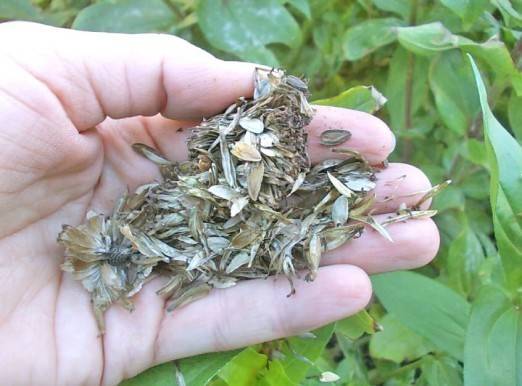

Autumn care, seed collection and wintering
Zinnia propagates only by seeds. Therefore, after the end of flowering, you can collect them from the flowers you like. Even during flowering, mark the largest and brightest with braid or ribbon. Leave a maximum of 5 flowers per bush. The rest must be removed until the seed pods are ripe. This makes it possible for the plant to direct all its forces to the formation of seeds. Cut the ripe seed pods in dry warm weather, leave in a warm dry room to dry. It is worth considering that the highest quality seeds are located near the core of the capsule. The dried seeds are stored in paper bags. Be sure to indicate the grade and time of collection of the material.
In temperate latitudes, zinnia is always grown as an annual. But if a perennial species is grown in a pot, then you can transfer it for the winter indoors. In the fall, the bush is transferred to the veranda. If it is very cold in winter, then you can transfer zinnia into the house.
How do you get your seeds from flowering plants?
Before you get zinnia seeds from your flowering plants, you need to choose the specimens you like the most. This planting material retains its germination capacity for 3-4 years. It is easy to collect seeds from any varietal group. They mature even in the harsh climatic conditions of the Urals, Siberia and the Far East.
Prepare the plant for seed collection in advance. Only those buds that will ripen to collect planting material need to be left on it. All other buds should be cut before they bloom. After removing the ripe seed boll, budding will continue. On average, it takes 55 days for the seed pod to ripen from the moment the bud opens. After harvesting, the seed pods should be placed in a warm place for an additional 30 days.
Then all the capsules are opened and seeds are extracted from them. They are sorted. for landing, you should take those that have the correct triangular shape. They are located around the pod core. the rest may have insufficient germination or lose their parental decorative properties.
Remember to label the seed bags. write not only the name of the variety and color, but also the year of harvest. This will help to reject outdated planting material in a timely manner.
Zinnia in landscape design
This plant can be considered versatile. Tall varieties are used to decorate ridges, front gardens, gardens. It is better to plant them in the background in small or large group plantings. Also tall majors are grown for flower cuts. Compact varieties are planted along curbs, used for planting in the foreground of flower arrangements. They are also suitable for decorating balconies and loggias.
Zinnias look good in group plantings with:
- marigolds;
- asters;
- marigolds;
- verbena.
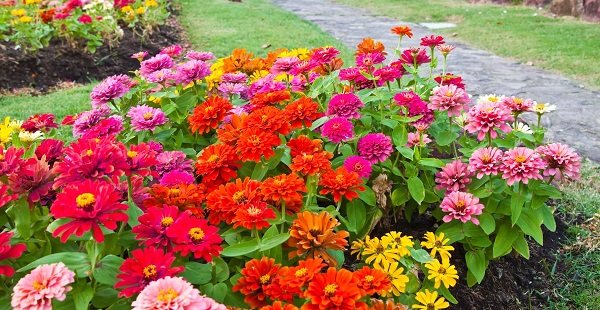

Zinnia is a common flower that can be found in most home gardens and flower beds. It multiplies easily with seeds and does not require much attention when grown outdoors. The versatility of the flower allows you to create various floristic compositions in landscape design.
Do you want to know more nuances of growing Zinnia on the site? Watch the following video:
What plants can zinnia be combined with
When creating a unique landscape design on your personal plot, you need to take care of the neighborhood of the majors in advance, because, despite their unpretentiousness, they do not have "friendly relations" with all flowers. A flower bed will look harmonious, where the following plants are planted next to the zinnias:
- marigold;
- marigold;
- entrusted;
- Chinese aster.
Low-rise varieties are best planted near the curb or along the edge of the flower bed. As for the tall varieties, they will become a colorful decoration for the center of the flower garden arrangement.
Features of growing zinnia
Zinnia is a light-loving and heat-loving plant that does not tolerate frost. For abundant, long-lasting flowering, requires soil with sufficient nutrients and a neutral reaction. The plot allocated for the cultivation of zinnias is first dug up, and then humus, compost or leafy soil are added at 8-10 kg per 1 sq. m. From mineral fertilizers add 1 tablespoon of superphosphate, potassium sulfate and nitrophosphate and dig it again to a depth of 10 cm.
Grows well in sunny areas, sheltered from the wind. Does not tolerate excess moisture in the soil and prolonged drought, in which the inflorescences become smaller. Zinnia responds to the introduction of organic and mineral fertilizers not only during planting, but also in dressings, which are carried out 2-3 times per season.
The first feeding of zinnias is carried out long before budding: 1 tablespoon of urea, 2 tablespoons of organic fertilizer "Flower" are diluted into 10 liters of water.
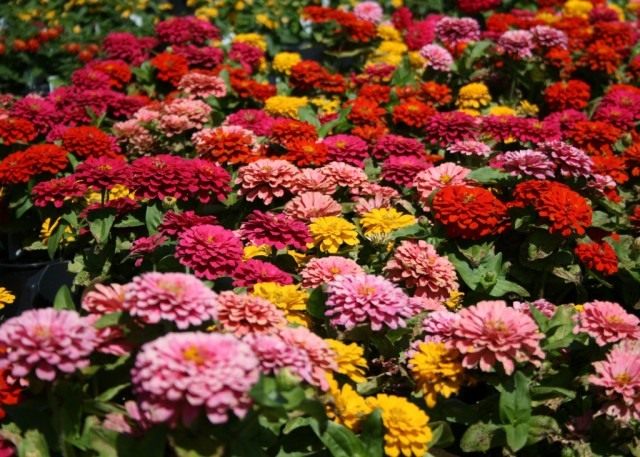

Zinnia graceful, grade "Magellan"
The second feeding is carried out at the beginning of budding: 1 tablespoon of Agricola for flowering plants and liquid fertilizer Raduga are diluted into 10 liters of water.
Before feeding, be sure to sprinkle with wood ash at the rate of 2-3 tablespoons per 1 sq. m. When opening flower buds, zinnia is sprayed with the preparation "Bud" (10 g is diluted in 10 liters of water).
Growing plants
For young seedlings, it is important to maintain bright, diffused lighting, preventing the seedlings from pulling out. If the weather is very cloudy, it is better to provide additional lighting in advance, but stretching can be handled in another way. Elongated zinnias seedlings can not be afraid to deepen, carefully pouring the soil without tamping up to the cotyledonous sprouts. Plants actively form adventitious roots and, without waterlogging, are not prone to decay of the trunk.
Water the seedlings carefully, but not letting the soil dry out. Waterlogging is just as dangerous for zinnias as it is for any other summer.
Fall flowers
Summer ends and harvest time comes in the country. The days are getting shorter and cooler, and autumn is approaching in the air. Bright autumn flowers bloom in the garden. Autumn plants are the most persistent - they absorb the last autumn warmth and delight us with their beauty before frost.
Marigolds (tagetes)
These annuals are often planted in the country, they can often be found next to garden crops. Small dark orange flowers with a spicy aroma. They begin to bloom as early as July and continue to bloom until November. In order for the plant to be lush in the fall, it must be cut off in the summer. Weed and weed regularly. Small varieties are suitable for planting in autumn.
Eschsholzia (California poppy)
It resembles a poppy in appearance. Flowers are yellow, orange or pink. The plant does not need complex care. The landing site should be open and sunny. The plant tolerates drought well, but it should still be watered a little during very dry summers.
Perennial asters
Asters come in a variety of colors. Their flowering time is from the end of summer to the beginning of frost. Asters are quite unpretentious and go well with annual and perennial crops, delight with their flowering until November.
Dahlias
More than 2000 varieties include these flowers. Peony, spherical, needle, collar, anemic and nymphaean - they differ in the shape of the inflorescences, the size of the flowers and the height of the bushes.
Rudbeckia
Quite unpretentious perennial plant. The flowers are bright yellow, 5-6 cm in diameter, reminiscent of a chamomile.
Chrysanthemums
Chrysanthemum bushes are a real decoration of the autumn garden.Many varieties of chrysanthemums are known. In our conditions, small-flowered varieties will grow better. They bloom until the end of November.
Diseases
Zinnia can get sick with improper care - stagnant moisture in the root system. So that the flowers do not die, they are regularly examined.
Powdery mildew... A gray bloom appears on the leaves. Flowers are treated with fungicide and the irrigation regime is adjusted.
Gray rot... Fluffy mold appears on the leaves and stems. Colloidal sulfur is used to combat it.
Bacterial spot... Greyish brown spots appear on the leaves. The disease is not cured, so the affected flowers are dug up and destroyed in order to save other plants from the disease.
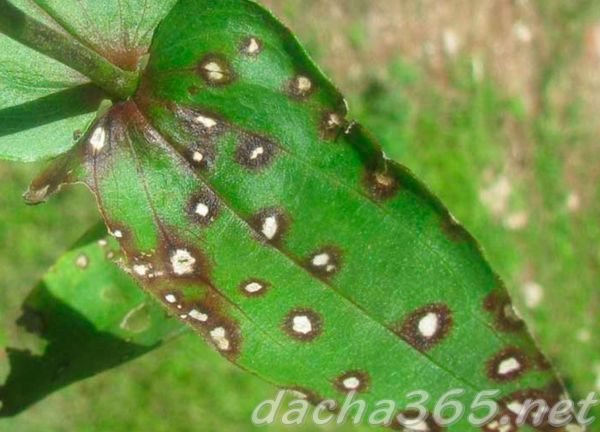

Caring for zinnia seedlings at home
As soon as you see the first leaves, start adding light top dressing right away. Do not immediately fill the flower with a large amount of mineral fertilizers. At first, you can try adding a small amount of top dressing, highly diluted with water. The first serious feeding is done after the appearance of four true leaves, and then fertilized weekly. It is necessary to alternate root and foliar feeding with complex mineral fertilizers diluted in water for irrigation. But, the solution should not get on the leaves of the seedlings, so as not to cause burns. But that's not all.
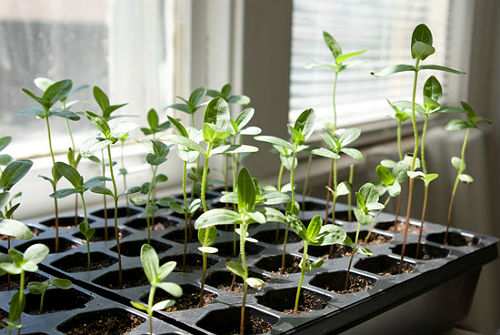

Seedling care consists of:
- Transplants. If the planting was carried out in a common container, then when the seedlings reach a height of up to 8 - 10 centimeters, they need to be transplanted into individual containers, deepening the seedlings to a depth of two centimeters. This will promote their rapid growth and protect against the spread of infections.
- Hilling. Upon reaching 10 centimeters, the seedlings should be spud (create a small earthen slide at the root), which will contribute to the appearance of adventitious shoots.
- Pinching. At the same time, you need to pinch, removing the shoots at the base of the root, at a height of two centimeters.
- Tempering. Want to grow a healthy seedling? Then, in 10 - 14 days, start hardening it, taking it out to the loggia for several hours.
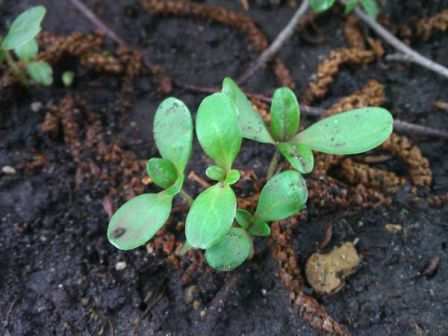

Many summer residents are delighted with zinnia. Why? The flower has pointed, egg-shaped leaves, and graceful buds in the shape of a basket, the diameter of which is from 3 to 16 centimeters.
Moon calendar
Novice gardeners often neglect the recommendations of the lunar calendar for sowing dates, but those who have been growing flowers for a long time know that this factor is best taken into account. To choose the most suitable sowing time, you should carefully read the Lunar calendar for April 2020. In it, you should familiarize yourself with the phases of the moon.
Sowing on the right day increases the germination rate of zinnia, promotes the formation of a strong and branched root system, initiates the growth of all aboveground organs and ultimately makes the seedlings healthier and more viable.
In April 2020, the most favorable days for sowing ornamental plants for seedlings will be as follows:
- April 1, Wednesday. The first quarter of the lunar cycle, 8, 9 lunar day.
- April 2, Thursday. The growing moon, 9, 10 lunar day.
- April 28, Tuesday. The growing moon, 6, 7 lunar day.
Since zinnia should be planted in mid-April, the following dates should be chosen:
- April 14, Tuesday;
- April 18, Saturday;
- April 19, Sunday.
Sowing on these dates will ensure the normal development of seedlings and the formation of a large number of buds on adult plants.
It is not worth sowing zinnia seeds on April 15, 16 and 17, since these days are unfavorable according to the lunar calendar.
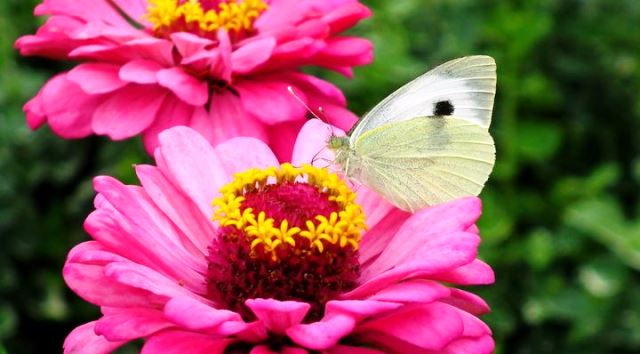

Caring for zinnia seedlings at home
As soon as you see the first leaves, start adding light top dressing right away. Do not immediately fill the flower with a large amount of mineral fertilizers. At first, you can try adding a small amount of top dressing, highly diluted with water.The first serious feeding is done after the appearance of four true leaves, and then fertilized weekly. It is necessary to alternate root and foliar feeding with complex mineral fertilizers diluted in water for irrigation. But, the solution should not get on the leaves of the seedlings, so as not to cause burns. But that's not all.
Seedling care consists of:
- Transplants. If the planting was carried out in a common container, then when the seedlings reach a height of up to 8 - 10 centimeters, they need to be transplanted into individual containers, deepening the seedlings to a depth of two centimeters. This will promote their rapid growth and protect against the spread of infections.
- Hilling. Upon reaching 10 centimeters, the seedlings should be spud (create a small earthen slide at the root), which will contribute to the appearance of adventitious shoots.
- Pinching. At the same time, you need to pinch, removing the shoots at the base of the root, at a height of two centimeters.
- Hardening. Want to grow a healthy seedling?
Picking and transfer to a permanent place
The step-by-step cultivation of zinnia seedlings includes such a mandatory item as picking. The procedure is carried out when the sprouts have acquired two real leaves. It is important not to injure the delicate root system, otherwise the seedlings will slow down in growth or even die. Young bushes are planted in separate containers (cassettes, pots) at least 10 cm high. Seedlings of majors are determined for a permanent place at the end of May. Even in the fall, the flower bed is dug up and humus is introduced. The seedlings are placed at a distance of 30 cm from each other, placed in the holes together with an earthen clod or directly in a peat pot. Whether the bushes have taken root or not, you will find out in a week.
Benefits of growing zinnia
There are at least five reasons that explain the desire of many gardeners to have beautiful zinnias in their garden. It:
- A whole rainbow of shades. These flowers come in all colors except blue, so they are easy to combine with perennials or annuals, deciduous plants and herbs.
- Any height. Among the varieties of zinnias, there are both high and low specimens; with them you can easily bring any ideas to life.
- The minimum of worries is the maximum return. Unpretentious zinnias will delight your eyes all season without having to take care of them with all your might.
- A feast for birds and butterflies. Plant some zinnias and watch your garden come to life with a host of winged creatures.
- Endless bloom. The more flowers you pinch off the zinnia, the more flowers will form.
Why grow zinnia?
Under favorable conditions, in warm summers, zinnia blooms profusely all summer from June to the first frost. Due to the high requirements for growing and care, many do not like majors. Zinnia fans adore these plants for the extraordinary beauty of their colorful flowers. If the conditions are right in your garden, it is worth trying to grow these interesting plants. Long and beautiful flowering is undoubtedly their great advantage, which should be used when decorating summer beds.
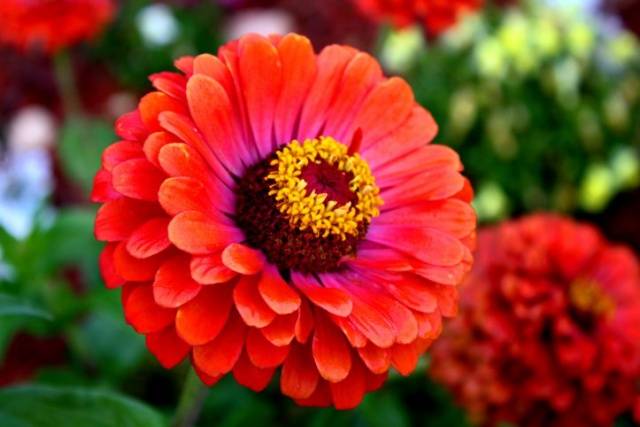

This article will be devoted to how to grow zinnia from seeds, when to plant seedlings in the ground and how to care for adult flowers.
Pests
Most often, zinnia is damaged by May beetles, slugs, aphids and snails.
May beetles, collected by hand and placed in a bucket of soapy water.
Aphid accumulates in any part of the plant, usually at the top, resembling dark spots. Aphid larvae try to sap young shoots, causing serious damage to them.
Aphids are destroyed with a solution of tar soap (100 g per bucket of water). In case of mass defeat, Actellik or Fufanon solution is used, which is prepared according to the instructions. Aphids can also be destroyed with Aktara.
Slugs and snails... Pests gnaw through the leaves, plant growth slows down. It is difficult to deal with them.You can spread out pieces of slate or linoleum on the site, under which insects will gather.
Sowing flower seeds before winter
The planting site is chosen flat so that in the spring the melt water does not wash the seeds. Before sowing, the beds are freed from the tops of carrion and various plant residues, and they are dug up. Into the ground seeds should be planted thicker than in spring... The germination rate of such seeds is lower, it is difficult for them to break through the soil that has compacted during the winter. After planting, the ground is mulched with a not thick layer of soil mixed with peat or humus, you can cover it with branches on top. The mulching mixture must be prepared in advance.
But even before planting, you need to prepare the land for sowing seeds in the fall, dig in and apply fertilizer. Make shallow grooves in the seedbed until the ground is frozen. When choosing flowers for an autumn garden, do not forget about the requirements of some plants. Basically, unpretentious plants are planted at their summer cottage.
What flowers to plant before winter
In winter, you can only plant cold-resistant varieties, you need to throw seeds into already frozen soil, or with a slight warming, they can germinate and in the future, of course, die. You cannot cover the seeds with a too thick layer of soil, otherwise in the spring it will be compacted under a layer of snow and it will be difficult for the seeds to germinate. As for the choice of flowers for autumn planting, it is extremely large.
What annual flowers are planted in autumn:
- marigold
- cornflower
- mignonette
- cosmeya
- Chinese aster
- carnation
- calendula officinalis
- poppy
Which of the two-year-old flowers are planted before winter:
- forget-me-not
- daisy
- turkish carnation
- viola
- bell
- lavender
- carnation
- delphinium
- lupine
- primrose
The most popular varieties with photos
- Lilliputian.
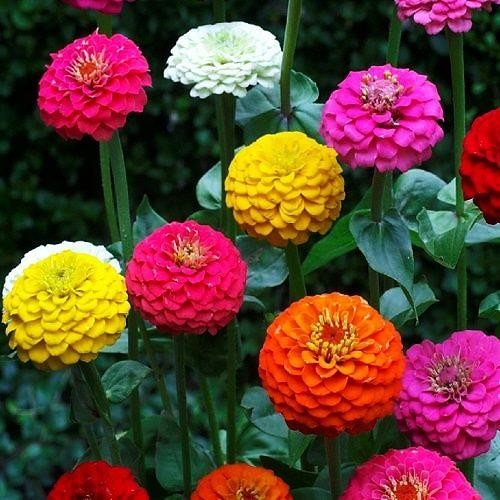

Low-growing zinnia Lilliput
- Short Stuff.
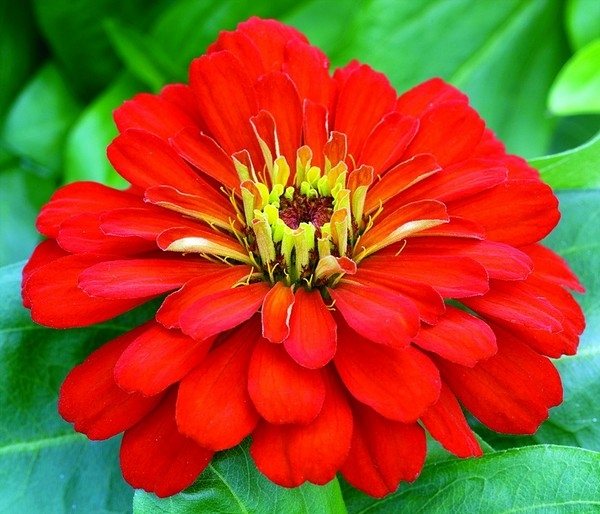

Undersized Zinnia Short Staff
- Persian rug.
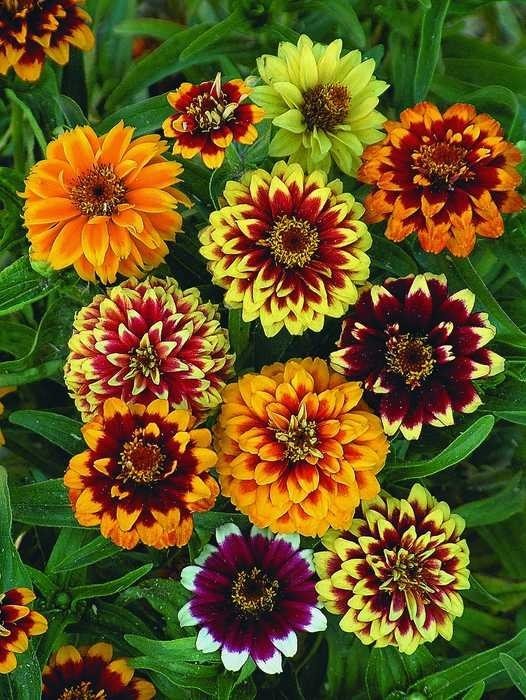

Narrow-leaved zinnia Persian carpet
- Thumbelina.
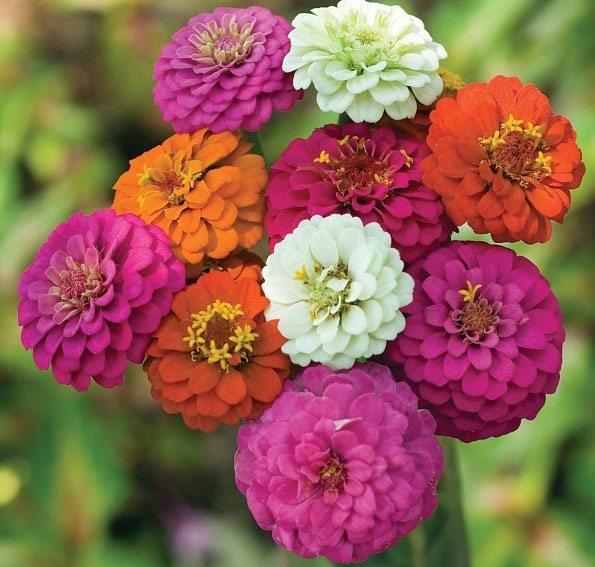

Bush zinnia Thumbelina
Winter sowing of perennials
Sowing in the winter for perennial flowers is natural. In nature, ripe seeds fall to the ground and, after waiting for spring, germinate. Moreover, for germination, many of them need to spend some time in a wet state at a low temperature.
This is also a plus for the gardener. For example, in autumn there are not so many things to do on earth, compared to spring time. You can safely start sowing seeds. Slowly prepare the beds or dig up a flower bed, pick out all the weeds, and add compost. While it is warm autumn days, cover the prepared soil with black film or spunbond so that the seeds of weeds will sprout and weed them out. And, finally, after waiting for a steady cold snap, sow seeds.
Before winter, you can sow seeds of lavender, gentian, aquilegia, primrose, Gaillardia, doronicum, carnations, aubriets, yarrow, beautiful small petals, bell, arabis, delphinium. In some plants, seeds cannot be stored for a long time or they require special storage conditions. Therefore, winter sowing is the only way of their seed reproduction. These include corydalis, hellebore, adonis, aconite, liverwort, lumbago, sanguinaria.
The seeds of some perennial flowers (breakthrough, alpine species of bell, hazel grouse, gentian, levisia, saxifrage) generally do not germinate well and can lie in the soil for years. Others need an alternation of low and high temperatures for germination. Sowing in winter helps to solve this problem positively. Basically, these are rare plants, many of them have small seeds, so they are advised to sow them not immediately into the ground, but in some containers. For example, in cassettes, plastic containers, small ceramic bowls, 7–12 cm high, separate for each type.
The optimal composition of the substrate for sowing seeds: 3 parts of peat, 3 parts of washed river sand (or vermiculite), 1 part of garden soil. Do not forget about drainage (gravel, expanded clay with a layer of 2 cm).
It is better to sow perennial seeds in November and even later.If they are very small, then they are pre-mixed with sand, but not sealed. Only slightly pressed into the substrate. Label each container so that you don't have to guess what has grown. Better to place containers in a shaded area of the garden so that the crops are not dried out by the winds. They were not flooded with autumn rains. In spring it is better to cover with glass. For example, experienced flower growers in the spring expose perennial seedlings with germinating seeds in a cold greenhouse with a removable roof.
Used literature: Journal "Garden and vegetable garden".
126
What is planted in the fall in the country
Seeds sown in the fall allow plants to bloom one to two weeks earlier. In addition, in the spring there will be less hassle with seedlings. It is better to immediately plant the seeds in the flowerbed and then not transplant. In the fall, any seeds are sown thicker, given that not all seedlings will survive. If the plants are too thick in spring, they can be thinned out.
As for perennial plants, it is better to sow them in the fall anyway. For seed germination of many perennial species, it is required cold stratification... Such plants that require stratification include primrose, lavender, delphinium and others. Most of the perennials sown in spring will bloom the next year. If you plant the seeds of perennials in the fall, and cover them with foil in the spring, then very often the plants bloom by the end of summer.

